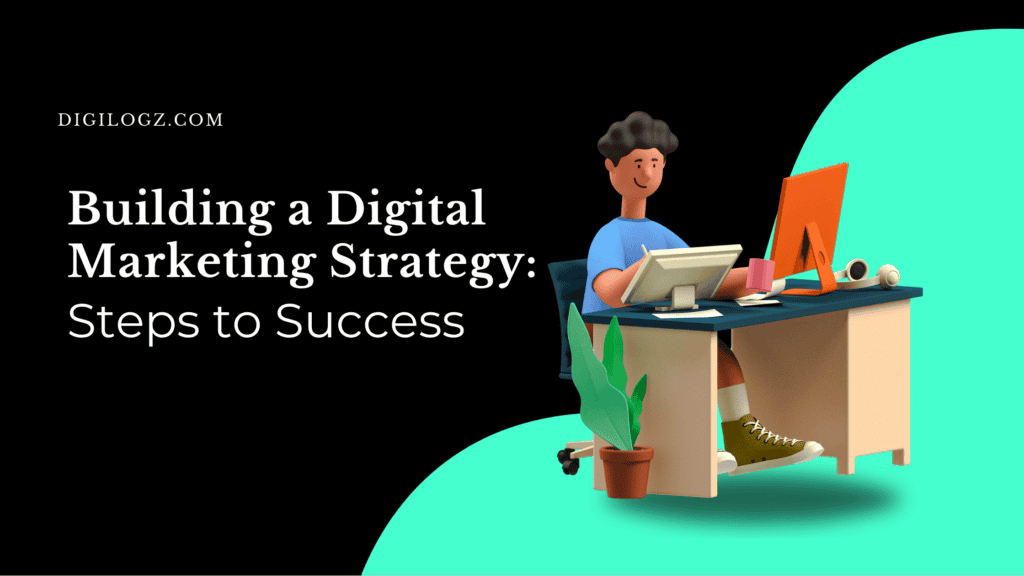Enhance Your Digital Strategy with AI-Powered Chatbots: Revolutionizing Customer Service and Engagement
In today’s fast-paced digital landscape, staying ahead of the competition requires more than just a solid marketing strategy. It involves leveraging cutting-edge technology to provide superior customer experiences. AI-powered chatbots have emerged as a powerful tool for businesses looking to revolutionize their customer service and engagement strategies. This article delves into how these intelligent bots can transform your digital approach, offering practical insights and steps to implement them effectively.
Introduction
Brief Overview of AI-Powered Chatbots
AI-powered chatbots are advanced software applications that use artificial intelligence (AI) to simulate human-like conversations with users. Unlike traditional chatbots that rely on pre-programmed responses, AI chatbots utilize natural language processing (NLP) and machine learning to understand and respond to queries in a more nuanced and personalized manner. They can handle a wide range of tasks, from answering simple questions to executing complex transactions.
The Growing Importance of Chatbots in Digital Strategies
The use of chatbots in digital strategies has grown exponentially in recent years. With the rise of e-commerce and digital communication, businesses are increasingly turning to chatbots to enhance customer service, streamline operations, and improve user engagement. These bots are not just a trend but a necessity in a world where customers expect immediate and efficient service.
Purpose of the Article
This article aims to explore the transformative potential of AI-powered chatbots in customer service and engagement. By understanding their capabilities, benefits, and implementation strategies, businesses can harness this technology to create more effective and customer-centric digital strategies.
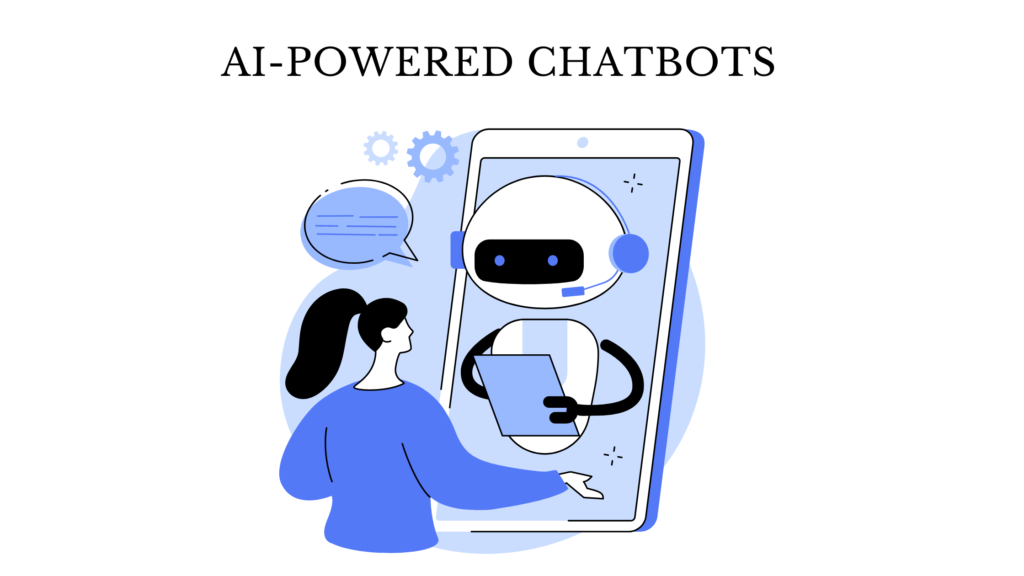
Understanding AI-Powered Chatbots
Definition and Basic Functionality of AI-Powered Chatbots
An AI-powered chatbot is a software tool that uses AI to interact with users in a natural language. These chatbots are designed to understand context, interpret user intent, and provide relevant responses. They can perform tasks such as answering frequently asked questions, guiding users through processes, and even making recommendations based on user preferences.
Evolution of Chatbot Technology
The journey of chatbot technology began with simple rule-based systems that followed scripted paths. Over time, advancements in AI and NLP have enabled the development of more sophisticated chatbots that can understand and generate human-like dialogue. Today’s chatbots are capable of learning from interactions, improving their performance, and offering increasingly personalized experiences.
Key Benefits of Integrating Chatbots into Digital Strategies
Integrating AI-powered chatbots into your digital strategy offers numerous benefits, including:
- 24/7 Availability: Providing round-the-clock support without the need for human intervention.
- Cost Efficiency: Reducing operational costs by automating routine tasks and customer interactions.
- Enhanced User Experience: Offering quick and accurate responses, which improves customer satisfaction and loyalty.
- Data Collection: Gathering valuable insights from user interactions to inform business decisions and strategies.
- Scalability: Managing large volumes of interactions seamlessly, making it easier to scale customer service operations.
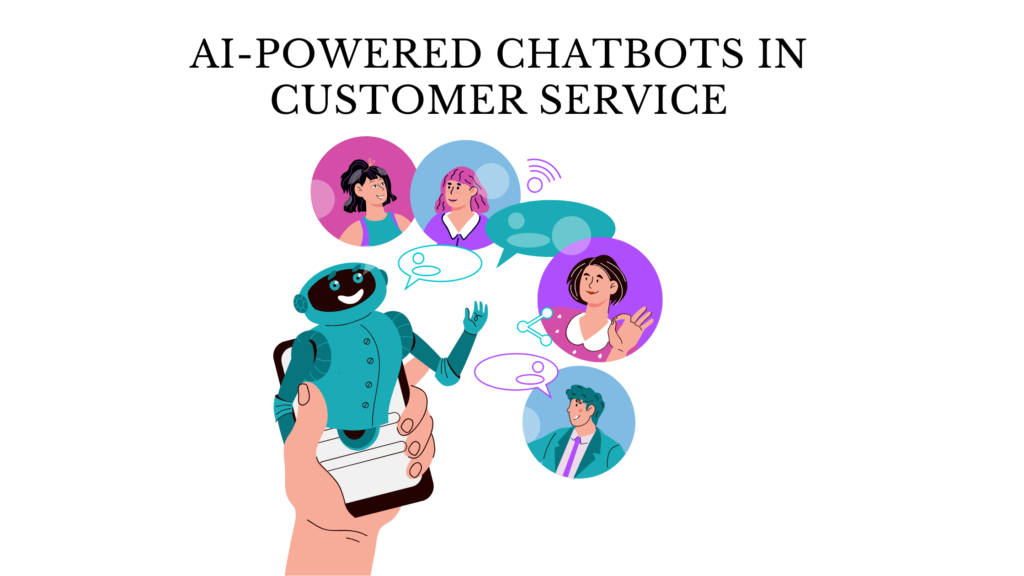
The Role of AI-Powered Chatbots in Customer Service
24/7 Availability
Providing Round-the-Clock Customer Support: One of the most significant advantages of AI-powered chatbots is their ability to provide 24/7 support. Unlike human agents, chatbots don’t require breaks or shifts, which means they can assist customers at any time of the day or night.
Examples of Improved Customer Satisfaction: Many companies have reported significant improvements in customer satisfaction and engagement by implementing chatbots. For instance, a global retailer reduced their response time by 80%, resulting in higher customer satisfaction ratings and repeat purchases.
Instant Responses
Reducing Wait Times for Customer Inquiries: Long wait times can be a major source of frustration for customers. AI-powered chatbots can handle multiple queries simultaneously, ensuring that customers receive instant responses without the need to wait in line.
How Instant Support Enhances Customer Experience: Instant support not only improves customer satisfaction but also enhances the overall customer experience. When customers get their issues resolved quickly, they are more likely to have a positive perception of your brand and continue doing business with you.
Handling Routine Inquiries
Automating Common Questions and Tasks: Chatbots are particularly effective at handling routine inquiries such as account balances, order status updates, and frequently asked questions. By automating these tasks, chatbots free up human agents to focus on more complex and nuanced issues.
Freeing Up Human Agents for Complex Issues: With chatbots handling routine tasks, human agents can devote more time and energy to resolving complex problems that require a human touch. This not only improves the efficiency of your support team but also enhances the quality of service provided to customers.
Personalized Interactions
Leveraging AI for Tailored Customer Experiences: AI-powered chatbots can analyze user data and preferences to deliver personalized interactions. For example, they can recommend products based on past purchases or provide tailored responses based on the user’s history with the company.
Case Studies of Successful Personalized Chatbot Interactions: Several companies have successfully implemented personalized chatbots. For instance, an e-commerce platform used AI chatbots to recommend products to customers, resulting in a 30% increase in sales. The chatbot was able to analyze user preferences and browsing history to suggest relevant products, leading to higher conversion rates.
Enhancing Customer Engagement with AI-Powered Chatbots
Interactive Engagement
Creating Dynamic and Engaging Conversations: AI-powered chatbots can engage users in dynamic conversations that go beyond simple Q&A. They can ask follow-up questions, provide additional information, and even inject humor into the interaction, making the conversation more engaging and enjoyable.
Examples of Interactive Marketing Campaigns: Many brands have used chatbots in innovative marketing campaigns. For example, a beauty brand launched a chatbot that provided personalized skincare recommendations and beauty tips based on user input. The campaign generated significant user engagement and boosted brand loyalty.
Data Collection and Insights
Gathering Valuable Customer Data Through Interactions: Chatbots can collect a wealth of data from their interactions with users, including preferences, behaviors, and feedback. This data can be invaluable for businesses looking to understand their customers better and tailor their offerings accordingly.
Utilizing Data for Targeted Marketing and Personalization: By analyzing chatbot interaction data, businesses can gain insights into customer needs and preferences, allowing them to create more targeted and personalized marketing campaigns. For instance, a travel agency used chatbot data to offer personalized travel packages, resulting in higher customer satisfaction and increased bookings.
Proactive Customer Outreach
Using Chatbots for Proactive Engagement and Follow-Ups: Chatbots can be used for proactive customer engagement by reaching out to customers with personalized messages, reminders, and offers. This proactive approach helps keep customers engaged and informed, enhancing their overall experience with the brand.
Benefits of Proactive Customer Service: Proactive customer service can lead to increased customer loyalty and satisfaction. By addressing potential issues before they become problems and offering relevant suggestions, chatbots can help build stronger relationships with customers.
Implementing AI-Powered Chatbots: Step-by-Step Guide
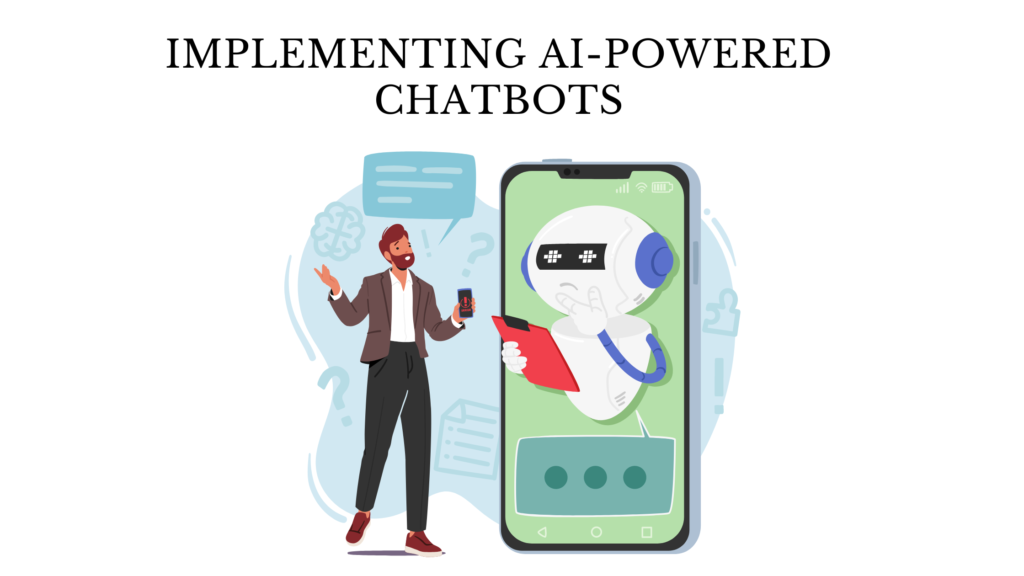
Step 1: Identifying Use Cases
Determining the Areas Where Chatbots Can Add Value: The first step in implementing a chatbot is to identify the areas where it can provide the most value. Consider the tasks that are most time-consuming for your team and the interactions that could benefit from automation.
Step 2: Choosing the Right Platform
Evaluating Chatbot Platforms and Providers: There are many chatbot platforms and providers to choose from, each with its own strengths and weaknesses. Evaluate your options based on factors such as ease of use, integration capabilities, and the level of AI sophistication required.
Step 3: Designing the Conversation Flow
Planning and Mapping Out Chatbot Interactions: A well-designed conversation flow is critical to the success of your chatbot. Plan out the interactions in detail, including the different paths users might take and the responses they will receive. Ensure that the flow is logical and intuitive, making it easy for users to navigate.
Step 4: Integrating with Existing Systems
Ensuring Seamless Integration with CRM, Support Systems, and Other Tools: To maximize the effectiveness of your chatbot, it’s important to integrate it with your existing systems such as CRM, customer support tools, and marketing platforms. This integration allows the chatbot to access and update customer information, providing a more seamless and personalized experience.
Step 5: Testing and Training the Chatbot
Strategies for Testing and Refining Chatbot Performance: Before launching your chatbot, conduct thorough testing to identify any issues or areas for improvement. Use real user interactions to train the chatbot, refining its responses and improving its accuracy over time.
Step 6: Launching and Monitoring
Best Practices for a Successful Launch: When launching your chatbot, start with a limited rollout to gather feedback and make any necessary adjustments. Promote the chatbot to your customers and provide clear instructions on how to use it.
Continuous Monitoring and Optimization: After launch, continuously monitor the chatbot’s performance and user feedback. Use this data to make ongoing improvements and ensure that the chatbot continues to meet user needs and expectations.
Common Challenges and How to Overcome Them
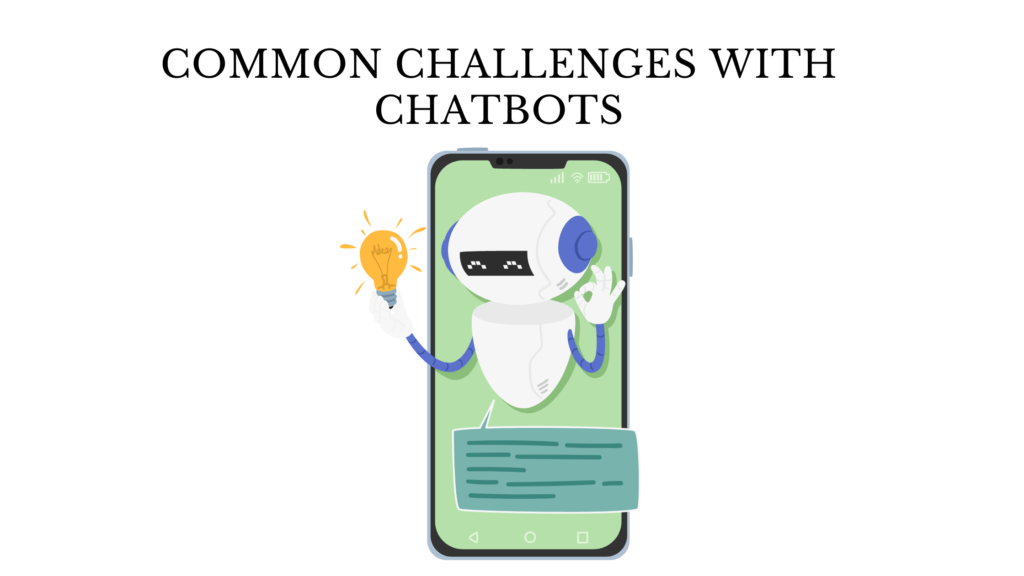
Natural Language Processing (NLP) Limitations
Addressing Language and Understanding Issues: NLP technology is constantly improving, but it still has limitations. Chatbots may struggle with understanding slang, regional dialects, or complex queries. To overcome this, use a combination of rule-based responses and AI to handle a wider range of queries.
User Adoption and Trust
Strategies for Encouraging User Adoption and Trust in Chatbots: Gaining user trust and encouraging adoption can be challenging. Clearly communicate the chatbot’s capabilities and limitations to users, and provide an option to escalate to a human agent if needed. Building trust with transparency and reliability is key to encouraging users to engage with your chatbot.
Integration Complexities
Overcoming Technical Challenges in Integration: Integrating a chatbot with your existing systems can be technically complex. Work with experienced developers and use integration tools and APIs to ensure a smooth and efficient process.
Advanced Strategies for Maximizing Chatbot Effectiveness
Leveraging Machine Learning for Continuous Improvement
Implementing Machine Learning to Enhance Chatbot Capabilities: Machine learning enables chatbots to learn from interactions and improve over time. By continuously analyzing user data and feedback, chatbots can refine their responses and become more effective at meeting user needs.
Omni-Channel Integration
Ensuring Consistent Experiences Across Multiple Channels: To provide a seamless customer experience, integrate your chatbot across multiple channels such as websites, mobile apps, and social media. Ensure that users have a consistent experience regardless of where they interact with your chatbot.
Utilizing Chatbots for Sales and Marketing
Innovative Ways to Use Chatbots for Lead Generation and Conversion: Chatbots can be powerful tools for sales and marketing. Use them to qualify leads, provide product recommendations, and guide users through the sales process. Innovative strategies such as personalized offers and interactive product demos can help drive conversions.
Future Trends in AI-Powered Chatbots
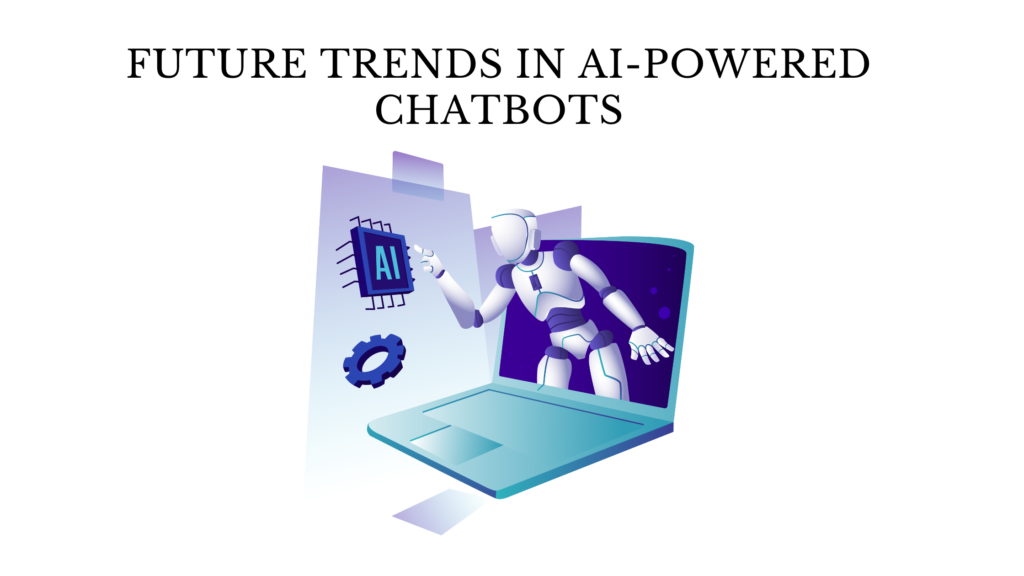
Voice-Activated Chatbots
The Rise of Voice Assistants and Voice-Activated Chatbots: Voice-activated chatbots are becoming increasingly popular with the rise of voice assistants like Amazon Alexa and Google Assistant. These chatbots allow users to interact using voice commands, offering a more convenient and hands-free experience.
AI and Emotional Intelligence
Developing Emotionally Intelligent Chatbots: The next frontier in chatbot technology is emotional intelligence. Chatbots are being developed to recognize and respond to user emotions, providing more empathetic and human-like interactions.
Integration with IoT Devices
Chatbots Interacting with Smart Devices for a Cohesive Ecosystem: As the Internet of Things (IoT) continues to expand, chatbots are being integrated with smart devices to create a more cohesive and interconnected ecosystem. This integration allows chatbots to control devices, provide updates, and offer a more seamless user experience.
Conclusion
Recap of Key Points
AI-powered chatbots are transforming customer service and engagement by providing 24/7 support, instant responses, and personalized interactions. They offer numerous benefits, including cost savings, improved user experiences, and valuable data insights.
Encouragement to Embrace AI-Powered Chatbots in Digital Strategies
As the digital landscape continues to evolve, embracing AI-powered chatbots is crucial for staying competitive. By implementing chatbots into your digital strategy, you can enhance customer service, improve engagement, and drive business growth.
Final Thoughts on the Future of Customer Service and Engagement
The future of customer service and engagement lies in the integration of AI technologies. AI-powered chatbots will continue to evolve, becoming more intelligent, empathetic, and integrated with other technologies. Businesses that adopt these advancements will be well-positioned to meet the changing needs of their customers and succeed in the digital age.
FAQs
How can chatbots improve customer service?
Chatbots can improve customer service by providing 24/7 support, reducing wait times, handling routine inquiries, and offering personalized interactions, leading to higher customer satisfaction and efficiency.
What are the challenges of implementing chatbots?
Challenges include limitations in natural language processing, user adoption and trust, and integration complexities with existing systems. Addressing these issues requires careful planning and ongoing optimization.
How can chatbots enhance customer engagement?
Chatbots enhance customer engagement by creating dynamic conversations, collecting valuable data for personalized marketing, and providing proactive outreach and follow-ups.
What are some advanced strategies for using chatbots?
Advanced strategies include leveraging machine learning for continuous improvement, integrating chatbots across multiple channels, and using them for innovative sales and marketing efforts.What trends are shaping the future of chatbots?
Future trends include the rise of voice-activated chatbots, the development of emotionally intelligent chatbots, and the integration of chatbots with IoT devices for a more interconnected experience.



